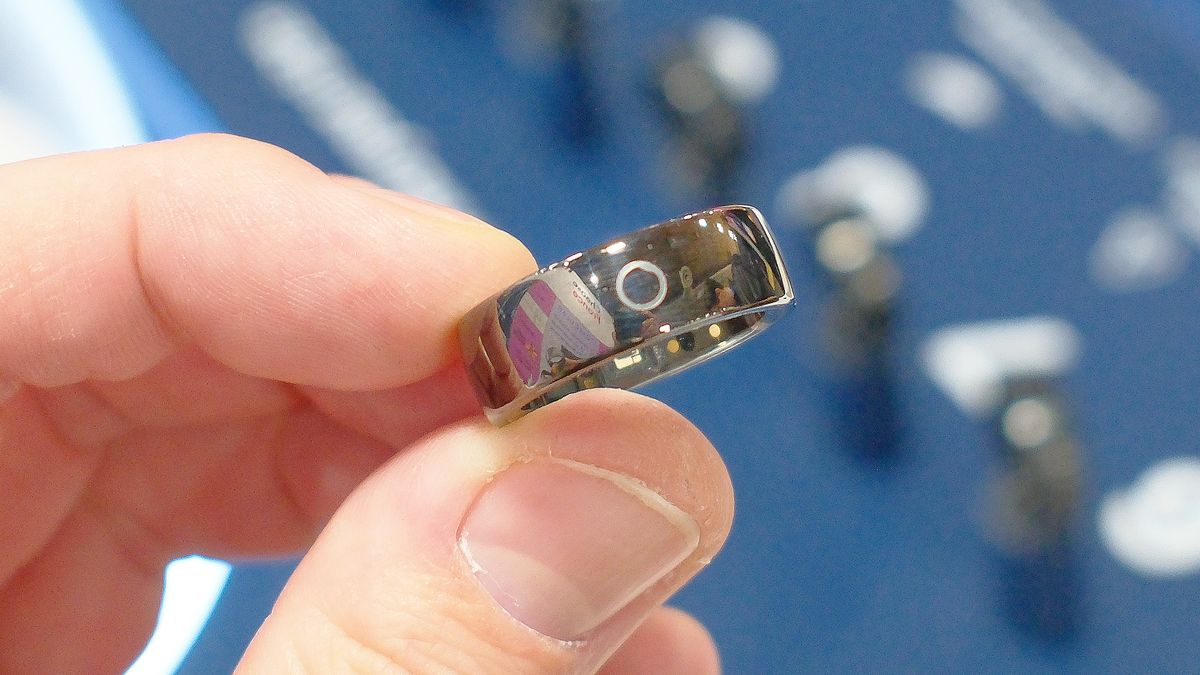The Lemokey L1 keyboard is a 75%-format entry into Lemokey’s aluminum-cased L series. In the L1, you can expect a smooth typing experience, alongside high levels of customization thanks to hot-swappability and open-source QMK firmware.
We reviewed the Lemokey L4 ($214), the 80% model in the series, and found a lot to like, despite the $214 price being pretty unpalatable. And it’s more of the same story with the L1, which costs the same. However, the design has much more going for it over the other keyboard in the series, with four rebindable buttons and a unique volume knob.
As much as I think your money is better off going towards one of the best Hall Effect keyboards, like the Keychron K2 HE ($130), you won’t be disappointed by the mechanical performance of the L1. With responsive Gateron Jupiter switches and great feeling keys, the L1 holds up really well in games that don’t necessarily require competitive-level performance.
So, should you still consider the Lemokey L1 for your next mechanical keyboard? Read on for my full Lemokey L1 keyboard review.
Lemokey L1 review: Cheat Sheet
- What is it? A metal mechanical gaming keyboard from Lemokey (Keychron’s gaming brand)
- Who is it for? Anyone looking for a customizable gaming board, with a unique design and some additional utility features
- What does it cost? A hefty $214 from Lemokey direct
- What do we like? The typing and gaming performance is great, with a build that generally succeeds at feeling premium
- What don’t we like? A PCB mounting seen in other Lemokey and Keychron boards, and there are better gaming boards out there for less money
Lemokey L1 review: Specs
Swipe to scroll horizontally
| Price | $214 (assembled) |
| Switches | Gateron Jupiter Red (Linear), Brown (Tactile), Banana (Tactile) |
| Hot swappable | Yes |
| Stabilizers | PCB-mounted screw-in |
| Mount type | Double gasket |
| Layout | 75% |
| Keycap profile | Cherry |
| Case | Aluminum |
| Colors | Black, Silver, Blue |
| Operating System | Windows, macOS |
| Connectivity | Bluetooth, 2.4G Wireless, USB Wired |
| Battery | 4,000mAh |
| Polling rate | 1,000Hz (USB and 2.4Ghz) / 90Hz (Bluetooth) |
| Measurements | 14.5 x 5.8 x 1.3 inches |
| Weight | 4.1 pounds |
Lemokey L1 review: The ups
The L1 has a lot going for it, particularly if you are enamored by its looks and/or you want a keyboard that’s great for both gaming and productivity. Add Lemokey’s hallmark customizability, and the L1 is quite the all-rounder.
Unique design
A special mention must go out to the Lemokey L1’s visuals, evocative of something you would find in a retro sci-fi flick. The silver model particularly is reminiscent of something from Star Trek, thanks to the sparkling metallic finish and stylized volume knob.

The Lemokey L1 eschews the usual positioning for connectivity settings, which tend to be placed out of sight at the back of the keyboard. On the L1, however, this forms a part of the volume knob unit on the left side of the board, with the ability to switch between Bluetooth, Wireless and Wired possible using a large mechanical switch. The volume knob itself is a large, textured roller. It’s a little bigger than it needs to be, but is a distinctive visual element that complements the board’s stylized aesthetic. It’s also one of the few keyboards that place these controls on the left side of the keyboard, which is much more convenient for right-handers to use while gaming, negating the need to lift your hand away from the mouse.

Like most other aluminum case keyboards, the L1 doesn’t have adjustable feet. Fortunately, the keyboard sits at an elevated profile by default, which was fine for typing and gaming on for me — it’s something to be aware of if you like to be able to fine-tune your gaming keyboard’s angle, though.
Gaming performance
The Gateron Jupiter Banana switches I tested are great. I don’t usually opt for tactile switches, but I enjoyed the resistance and feedback of the switches and found them comfortable over long gaming stints. I also enjoyed the broad, flat Cherry profile keycaps, which make finding the correct keys easier. Specifically, I find games with a large amount of keybinds, like RPGs and real-time strategy games, much easier to play on this profile versus the rounded, typing-oriented profiles like Keychron’s OSA, as the flatter, larger keys give easier access to the whole board. Managing my economy in Victoria 3 was never easier.

While the Jupiter switches are very good, admittedly I found myself missing the adjustable actuation of Hall Effect boards in faster-paced games like League of Legends and FPS titles like Counter-Strike 2, and I struggled to use the L1 in any fast-paced, competitive environments. Once you’re used to the supremely responsive actuation of magnetic switches, mechanical boards just don’t feel responsive or snappy enough, particularly in competitive shooters. If you play a lot of those kinds of games, consider a Hall Effect board like the Keychron K2 HE ($130), NuPhy Air60 HE ($139) or Wooting 60HE+ ($139).
Rebindable buttons

I really liked using the Lemokey L1 for playing MMOs and mil-sims, where I was able to utilize the four macro buttons for extra keybinds. I tested the keyboard specifically in World of Warcraft: Classic, where I was able to use these extra buttons as easily accessible ways of activating my main abilities and various items.
The NuPhy Field75 HE features a total of eight rebindable buttons, which makes it a better choice for anyone looking for an MMO keyboard — combined with the Hall Effect switches, it's a great option for faster-paced raids and dungeons.
Typing experience
In type tests on the L1, I achieved speeds and accuracy slightly above my average, but what the results don’t show is just how comfortable the typing was. The Gateron Jupiter Banana switches feel great, with each press giving me the perfect amount of feedback for fast typing.
Swipe to scroll horizontally
One of the reasons I enjoyed typing on the keyboard was the shape of the Cherry profile keycaps, which employ a wider, flat surface. I prefer this for typing over the higher, rounded keycaps like the OSA profile used on Keychron boards, as it helped me find the right keys better and improved my accuracy. The typing performance was a big boost for quickly typing out in-game messages — something necessary in the dungeons of voice-chat-less MMO games.
I also love the gloriously tappy sound of the keys, which make typing on the board for work just as joyous as gaming. The sound is sharp; the Gateron Jupiter switches have a much brighter and better sound than the linear Hall Effect switches on the Q1 HE, a similarly priced aluminum gaming board from Keychron. It is, however, much louder than other boards I have tested — although as a keyboard that stayed at my gaming PC desk rather than coming to the office with me, I didn’t have much of a problem with this.
Customization
The Lemokey L1 can be specced with three switches from Lemokey, with one linear and two tactile options, but is fully hot-swappable so you can use your favorite mechanical switches — whether they are 3 or 5-pin. This is the strongest element of mechanical keyboards over the Hall Effect gaming boards from Keychron — while the K2 HE and Q1 HE are both hot-swappable, you can currently only swap between a small roster of compatible magnetic switches.

It also runs open source QMK firmware, which allows enthusiasts to fine-tune the board from a software perspective. Even casual users will have no issue customizing the board using Lemokey’s Launcher app, accessible from a web browser, to perform quick customizations like macros, keybindings and lighting adjustments.
Lemokey L1 review: The downs
The Lemokey L1 is held back in a few areas, preventing it from earning an easy recommendation. Connection and build issues certainly raise an eyebrow given the $214 asking price.
Design flaws
The PCB on the L1 bends when you press down certain keys at the extremities of the board, particularly when using the four extra macro buttons. This is an issue we’ve seen before on other Lemokey/Keychron boards using Keychron’s 80% and enlarged 75% TKL PCBs (Lemokey is a Keychron sub-brand so they share components), including the Keychron V3 Max and Lemokey X5. We’ve previously taken these boards apart, and the issue stems from improperly positioned mounting points — essentially the outer mounts along the top and bottom of the PCB/case should’ve been positioned closer to the sides of the assembly.

This really lets down the board’s otherwise great build quality and potentially presents a risk of damage to the PCB over time. The bending is significant enough that I felt the need to be careful about pressing down the macro buttons too hard, as well as any of the leftmost buttons. Reviews editor Peter Wolinski spoke about this problem to Keychron, which confirmed it was aware of the issue, so we should see it resolved in future boards. Of course, it isn’t rectified yet, so this is still a reason to avoid the board. The Keychron Q1 Pro is priced similarly with comparable features yet doesn’t suffer from this issue (as it uses the smaller 75% PCB without additional function keys), if you’d like an alternative.
Quality control

A minor, yet annoying, flaw was the wired connection port. The included cable had a very loose, awkward fit into the USB-C port, which was frustrating given I tend to keep my gaming boards (especially ones this heavy) as wired devices — this didn’t pose any significant obstacle to using the keyboard, but is an indication alongside the PCB issue as a lack of quality control.
Value
Unfortunately, for $214, the Lemokey L1 feels like a bad investment. The price sits around the usual price point for Lemokey and Keychron aluminum-bodied keyboards, and for metal keyboards in general, but there’s no doubt that it’s pricey. If you don’t care for the aluminum case, or want something slightly less cumbersome, you can save a lot of money. Pick up a keyboard for around $120 like the Cooler Master MK770, kit it out with tactile switches, and it will functionally be the same as the L1 (besides the macro buttons). If you want a keyboard with even more rebindable buttons, you can’t go wrong with the NuPhy Field75 HE ($149).

A big factor as to why gamers might not wish to consider the L1 is the lack of gaming features in general. The keyboard lacks Snap Tap or Rapid Trigger features entirely, which any gaming keyboard worth its salt in 2024 should support, especially at over $200. These are usually found only in magnetic boards like the Keychron Q1 HE, but mechanical keyboards like the Razer BlackWidow V4 Pro ($299) do support such features.
If you like mechanical keyboards, there are much better options from a Keychron/Lemokey itself for roughly the same money, but without the PCB issue — for example, the Lemokey L4 or Keychron Q3 Max.
Lemokey L1 review: Verdict
The Lemokey L1 is by no means a bad keyboard. In fact, I would say it’s a good board overall. Unfortunately, for $214, it feels like a bad investment into a gaming keyboard unless you are someone who actively dislikes the feel of magnetic switches.
This is a keyboard that is only worth your consideration if you like to game on tactile switches — otherwise, you are much better off spending a few dollars more for the excellent metal Q1 HE, or saving your money and picking up a K2 HE instead. If you are a tactile fan, though, the L1 is a tempting choice when compared to other top-of-the-line tactile gaming keyboards like the Razer BlackWidow V4 Pro 75% — at a whopping $299, I would much rather stick with the L1.
For me, the lack of gaming features is why I wouldn’t consider using the L1 full-time, as it falls behind in higher-performance games. For casual gamers or those after a keyboard that can double up for work, the unique design and lovely typing experience just might be enough to win you over.










![How Performance Marketing + Brand Fuels Traffic Growth And Conversions [Webinar] via @sejournal, @hethr_campbell](https://www.searchenginejournal.com/wp-content/uploads/2024/12/featured-963.png)










 English (US) ·
English (US) ·